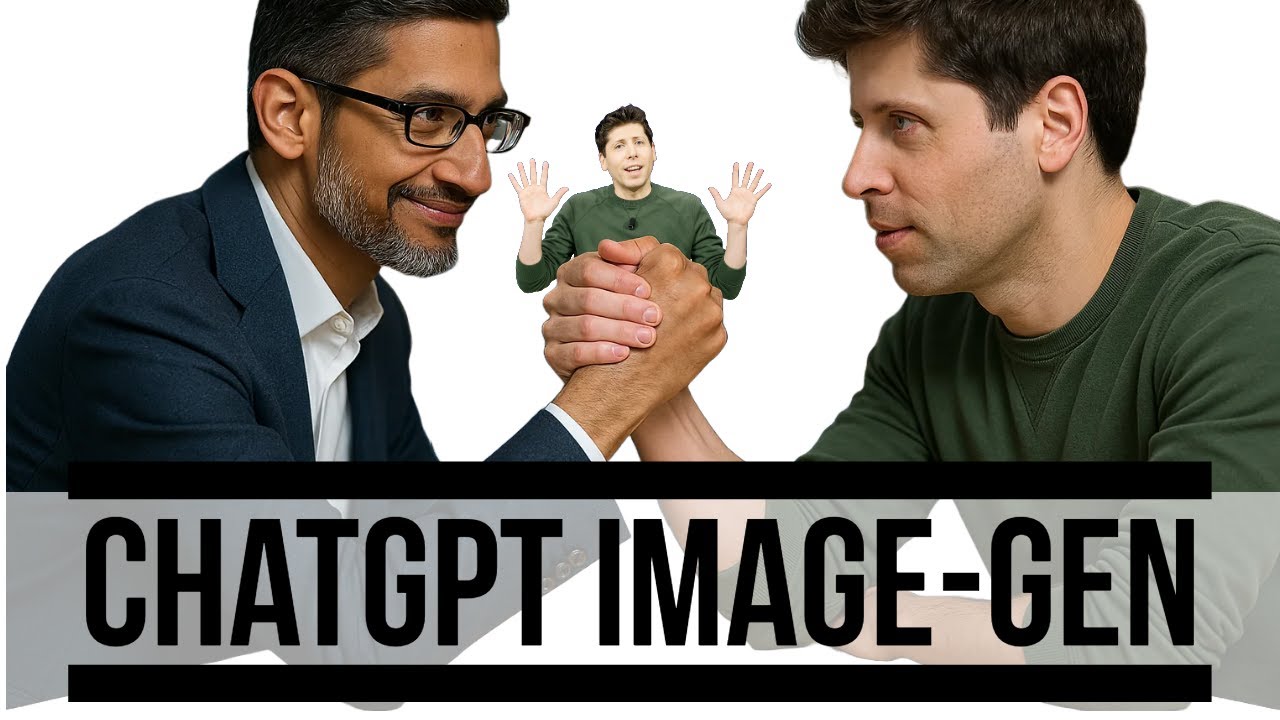In the video, the creator tests OpenAI’s new image generation model, highlighting its impressive ability to generate complex images and understand context, outperforming competitors like Reve, Imagen 3, and Midjourney. They showcase the model’s editing features and reflect on its potential impact on AI development, inviting viewers to share their thoughts on its capabilities.
In the video, the creator shares their extensive testing of OpenAI’s new image generation model, referred to as “40 image gen,” comparing it to other models like Reve, Imagen 3, and Midjourney. The presenter highlights the impressive capabilities of the new model, particularly in generating images based on complex prompts. They note that while the model is not perfect—especially when it comes to understanding unconventional scenarios, such as depicting an elephant with three legs—it performs significantly better than its predecessors, especially in rendering hands, which has historically been a challenge for AI.
The creator provides specific examples of prompts used during testing, such as depicting “three apples balanced on the trunk of a blue elephant with three legs standing beside five weeping willow trees.” They remark on the model’s ability to capture key elements of the prompt, including the location and the number of apples, although it struggles with the unconventional aspect of the elephant’s legs. Comparisons with other models reveal that while Reve performs well, it still falls short of the accuracy and creativity displayed by OpenAI’s new model.
Another interesting test involved illustrating the idiom “hold your horses.” The new image gen model successfully conveyed the metaphor visually, while other models like Reve and Midjourney failed to grasp the idiomatic meaning. This demonstrates the advanced understanding of context and metaphor that the new model possesses, setting it apart from its competitors. The creator emphasizes that this capability is a significant leap forward in AI image generation.
The video also showcases the editing features of the new model, which allow users to modify existing images easily. The presenter demonstrates this by adding glasses to characters in an image, highlighting the model’s ability to maintain the integrity of the original while making requested changes. They compare this functionality to other models, noting that many struggle with similar tasks, further underscoring the advantages of OpenAI’s offering.
In conclusion, the creator reflects on the overall performance of the new image generation model, suggesting that it represents a significant moment in AI development. They ponder whether this tool will become a staple for users or if it will be underutilized. The video wraps up with an invitation for viewers to share their thoughts on the model’s capabilities and its potential impact on the future of AI-generated imagery.
